
This activity is designed to be used with the plastic frogs found at Dollar Tree (called "Rainforest Creatures...they come with 9 or 10 in a pack). To make it, print and cut out the lily pads (above). Children read the simple descriptions (color words) on the lily pads to match the frogs to the correct lily pads. I make the activity more exciting by adding tongs to pick up the frogs and magnifying glasses to examine them carefully.

This is another activity designed to be used with Dollar Tree animals. The insects are very realistic looking and come in packages of 6 (also called "Rainforest Creatures"). Print out insect information sheet and the insect labels (above). You can choose to leave the information sheet whole or cut it apart into cards. You will need to cut the insect labels out (I have 2 sets because I purchased 2 packages of insects). Children match the labels to the plastic insects by reading the descriptions and looking at the real photos on the information sheet. You can add tongs and magnifying glasses to this activity also!
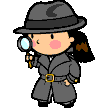
This is a great activity for introducing magnifying glasses in the beginning of the year. Print out the 3 sets of "magnifying picture cards" (above)--transportation set, living things set, and fruit set. I printed each set onto different shades of cardstock (white, gray, or beige) just to make organization easier. Leave the large pictures in a whole sheet (work mat) but cut the tiny pictures into individual cards. Children use magnifying glasses to enlarge the tiny pictures and then match them to the larger pictures. This is an easy way to show children how magnifying glasses work!
Please be aware that this is a LARGE file and will take a few minutes to download.

You will need 4 types of plastic animals for this activity (mine came from Dollar Tree--the Rainforest Creatures brand): frogs, lizards, insects, and snakes. Put all animals in a bucket. Children use tongs to remove them one at a time and place them on the sorting mat (download above).
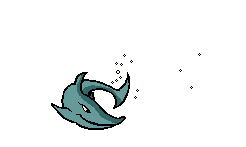
Sea Creature Information Sheet
This activity uses plastic sea creatures: dolphins, sharks, and whales. You can order these from Oriental Trading (PVC SEA LIFE ANIMALS). I've also found some large, stretchy ones at Dollar Tree. Print out the Sea Creature information sheet and the activity cards. Children use the facts and photos on the information sheet to complete the other activities: sorting by type of animal, sorting by what they eat, answering trivia questions.

These circle puzzles depict the stages in the life cycle of humans, butterflies, frogs, and plants. Each puzzle is eight pieces (if you work with younger children you could make them four pieces by leaving the words attached to the pictures).
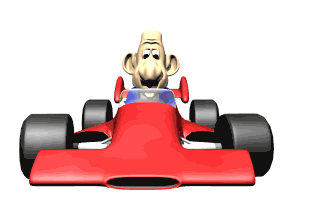
This activity is designed to be used with wooden unit blocks and any type of toy car. Children build the ramps depicted on task cards and then "race" a car down them to find which ramp will make the car go the furthest. Print pages 1-4 on cardstock and laminate. Cut apart cards. Tape the starting line to the floor as a guide for children. Print page 5 on regular paper and photocopy for children to record results.

Print all pages on cardstock. Cut apart and laminate (optional). To play, children turn all cards upside down on table. Players take turns uncovering 2 cards at a time. If the cards match (parent/baby), the player keeps the cards and takes another turn. If they don't match, the player returns the cards and the next player takes a turn. Continue until all matches have been made.

Print all pages on cardstock. Cut apart and laminate. To use as a flannel board set, attach the rough side of sticky-back Velcro to all pieces. Before playing, children place the habitat cards on the flannel board. Spread all cards face up on the playing surface. Children take turns choosing a card and matching the animal to the correct habitat. To make this game self-correcting, you may want to consider putting a symbol on the back of the cards.

Magnets
Here are two activities for magnets:
Stick to It: Gather all materials and place in a tub or box for children. Make one copy of the record sheet for each child. Children test the objects and record "yes" or "no" to show if they are magnetic.
Magnet Mystery: Make one copy of the record sheet for each child. Children take magnets around the room and test objects to see if they are magnetic. They record their findings on the record sheet. **BE SURE TO EXPLAIN THAT MAGNETS MUST BE KEPT AWAY FROM ELECTRONIC (COMPUTER)**
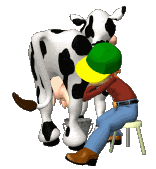
Print all pages on cardstock. Cut all puzzle pieces apart and laminate. To play, children assemble puzzles showing where each product comes from (this is one of our science standards).
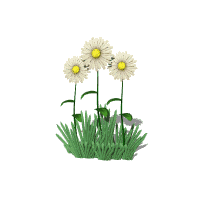
Print all pages on cardstock...you will need to print 6 copies of the first page (no pictures...these are game mats) and one of each of the remaining pages (flower pages). Laminate all parts. Cut the flower pages apart (4 pieces each) but leave the game mats uncut. To play spread all of the flower pieces face down on the table. Each player takes a game mat. Players take turns choosing a card. If they need the card to complete their flower, they place it on their game mat. If not, they replace it on the table. The first player to complete a flower (all 4 parts) wins.

Print all pages on cardstock. Laminate and cut the tools pages apart into individual squares (there are 24). To play, place the tools cards in a pile in the middle of the table. Each player should choose a community helper game mat. Players take turns drawing a card. If it belongs to their community helper, they place it on their mat. If not, they pass it to the player with the correct community helper. Play continues until one player collects all four tools for his community helper.
This is really a social studies game but since I don't have a social studies page, I'm putting it here for now.

Who Stole the Cookies from the Cookie Jar?
Print all pages on cardstock. Laminate and cut the fingerprint cards apart. Leave the cookie jar pages whole. To play children use magnifying glasses to examine the fingerprints on the cookie jars. They compare them to the fingerprint cards to find which child stole the cookies from that jar. Then children complete the recording sheet to show their findings.

To use this activity you will need color paddles. I purchased mine from Oriental Trading (18 pack for $4.95). Print the first two pages on cardstock and laminate. Cut the circles on the second page out. To use, students look through the color paddles (a few single color and several combinations). They match the circles to show how the room looks when they look through the paddles. Print the third page on regular paper and provide copies for children. On this sheet, they create their own color combinations and record the results.

Print and laminate the directions page (one per group or student). Print and copy the observation sheet for each student. Children place a Gobstopper candy in a small bowl of water and watch as it changes color. Children record the changes on the sheet by coloring the circles and writing color words.

What's Heavier? Pumpkins Apples
To use this activity, you will need a balance scale, a small pumpkin, and a variety of small objects (see sheet--all are classroom materials). Children use the balance scale to determine which item is heavier and record this on the sheet.

Print and laminate six game mats (page 3) and one set of playing cards (pages 1 and 2). To play, each child takes a game mat. Place the playing cards face down in the middle of the playing area. Children take turns drawing a card. If they get a farm animal, they place it on the game mat. If they get another type of animal OR if they get a farm animal they already have, they place the card face down on the table in a discard pile and the next player takes a turn. Continue until one player fills the game mat (4 animals).
Search for additional activities to go with these themes: